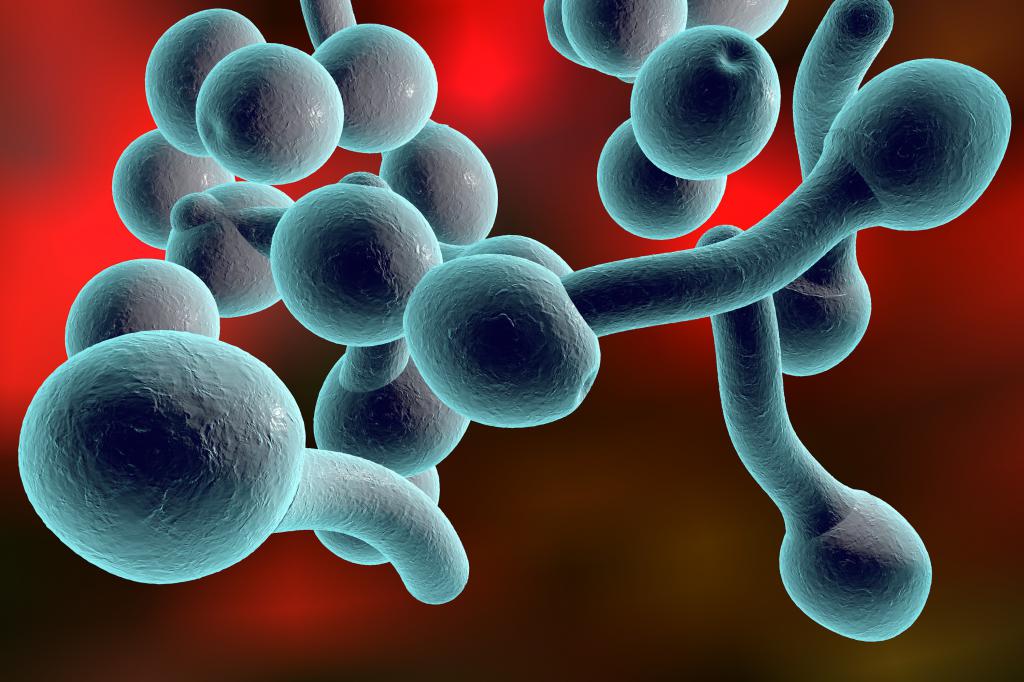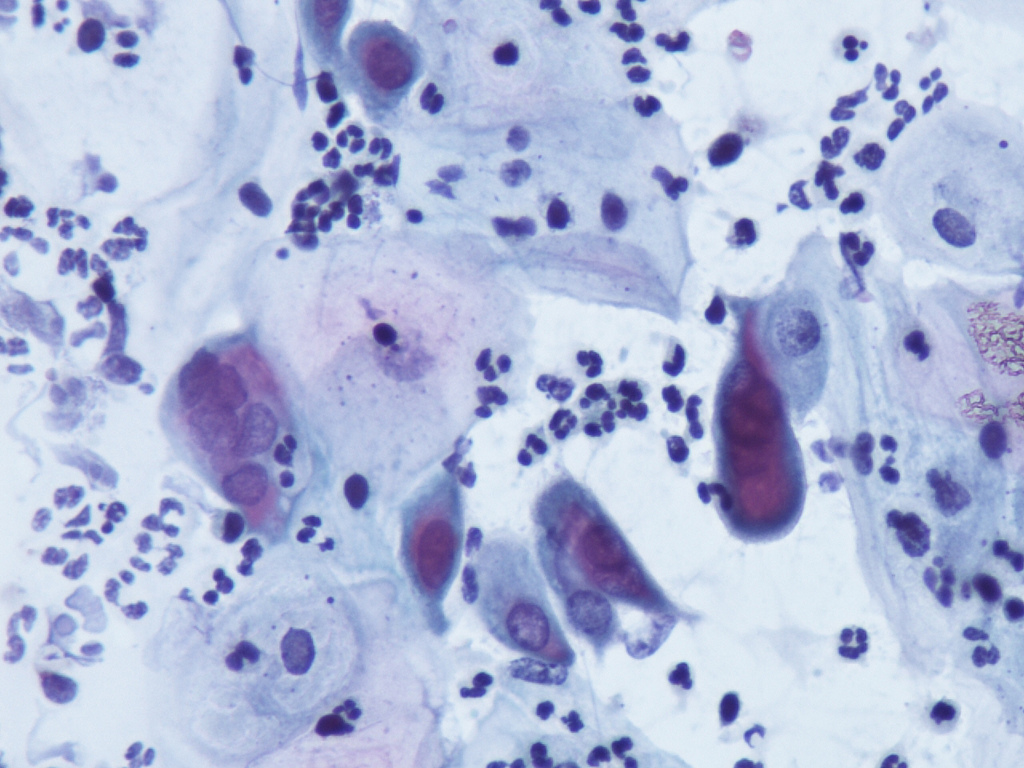White curdled discharge and itching of the female genital organs are frequent complaints during a visit to the gynecologist. These may be the only symptoms or accompanied by other complaints. About half of the patients who consult a doctor indicate recurring discharge of a curdled consistency. During pregnancy, their number increases by 2-3 times.

Most of the women, about 70%, including completely healthy ones, at least once in their life have encountered white curdled discharge and itching of the vagina. Such episodic manifestations are considered physiological norm. Short curdled discharge that arose for the first time and ceased without additional measures can be considered the norm. The development of pathological processes is indicated by cheesy discharge, which is accompanied by a constant feeling of discomfort and burning of the labia.
What discharge is considered the norm?
Every adult woman has an opinion on what normal vaginal discharge should be like in a healthy body. Meanwhile, there are long-known aspects for determining the norm.

Normal considered vaginal discharge with the following characteristics:
- The consistency is more like jelly or mucus, in other words, watery.
- Colorless, transparent or whitish.
- The volume of discharge is insignificant, but noticeable.
- The absence of any unpleasant odor.
- Discharge does not irritate the skin and mucous membranes.
- The patient does not experience pain, itching and burning during discharge.
The amount of discharge is not always constant. The increase is affected by the woman's cycle, namely its middle, when ovulation occurs. At the time of lactation and sexual arousal, the volume of secretions is also able to increase, such phenomena should not scare a woman.
Other causes that affect the amount of vaginal discharge in healthy women are:
- stressful situations;
- hormone therapy;
- hypothermia;
- acclimatization.
Pregnant women note that the discharge becomes the most fluid and abundant - this also applies to the norm.
As a rule, normal vaginal discharge is not felt, do not leave too noticeable marks on underwear.
White curdled discharge and itching in most cases indicate the development of a pathological process in the body, which is caused by infection of the vaginal mucosa with yeast-like fungi as a result of reduced immunity.
Vaginal candidiasis
Yeast-like fungi Candida (Candida) are on the skin and mucous membrane, including the vagina, of healthy women in an amount that is not capable of causing the development of pathologies. The protective properties of the body do not allow microorganisms to multiply in the vagina. When the conditions favorable for fungi occur - a decrease in immunity - conditionally pathogenic microorganisms multiply intensively and provoke the development of an infectious and inflammatory process.

Types of discharge in candidiasis:
- Watery whitish discharge of a cheesy character, in appearance resembling fermented milk.
- Dense, like cottage cheese, secretions containing white lumps.
Their color is not always white. The color of cheesy discharge depends on the presence of extraneous microorganisms that are involved in the inflammatory process. For example, with trichomoniasis and gonorrhea, the discharge turns yellowish or, rather, green, indicating the presence of purulent contents in them.
Additionally, vaginal discharge has a specific musty odor. Often, infection of the vaginal mucosa with Candida fungi induces severe itching and burning of the labia.
Causes of candidiasis
The causes of the pathology are quite diverse, for example:
- Incorrect or insufficient intimate hygiene.
- Too frequent douching with chamomile at home. The procedure is able to change the acid-base balance of the vagina, destroying beneficial bacteria. Pathogenic fungi are actively growing in their place.
- Great stress.
- Antibiotic therapy.
- Intimate hygiene products with a high content of alcohol, dyes and fragrances.
- Unsuitable hormonal contraceptives.
- Abnormalities in the hormonal background.
Diagnosis of candidiasis

Diagnosis of candidiasis does not present any particular difficulties, it must be carried out if a woman observes white cheesy discharge, feels itchy. The diagnosis is confirmed with the help of a laboratory test - a smear in the gynecological office. Unlike diagnosing by symptoms, thrush is often difficult to treat. In patients with a weakened immune system, candidiasis can provoke complications.
Thrush treatment
As therapy, you need to choose the right drug. In this case, the presence of concomitant infections must be considered.
It is not uncommon when a patient, having discovered the symptoms of thrush, treats herself on her own. The advice of friends, as well as the advertised medicinal products for candidiasis, are used.
Self-medication very rarely gives a positive trend. Often a woman drowns out the symptoms of the disease, and the infection itself remains inside the body. For a while, a woman lives an ordinary life, rejoicing in the victory over inflammation, but the pathology returns with the formation of an infectious chronic process. Without increasing the patient’s immunity, no one can guarantee successful treatment.
Is the thrush contagious?
Many women are concerned about the transmission of a fungal infection to their sexual partner. To date, infection of a partner with Candida fungi is considered only theoretically and has no confirmation. Therefore, the patient’s sexual partner does not receive specific treatment.
What other discharge are there?
Many women believe that the cheesy discharge of white, green and other shades comes from the vagina, but this is not always true. The origin can be varied. Only an experienced specialist can determine it. This will be the beginning of competent treatment. Types of origin of discharge:
- Tubal discharge. They are the result of the inflammatory process in the fallopian tubes and the accumulation of fluid in these organs.
- Uterine discharge is a characteristic sign of endometritis, which develops as a result of damage by pathogenic microbes.
- Vaginal discharge. Arise, as mentioned above, with thrush, trichomoniasis, herpes and other diseases of the genital area.
The consistency of discharge is of great importance in the diagnosis. So, for example, copious and literally foaming secretions indicate the presence of chlamydia. And white curdled discharge with an itch and an unpleasant smell of spoiled fish is a sign of gardnerellosis.
Genital herpes
Women often confuse pathology with vaginal candidiasis for a simple reason - similar white curdled discharge with itching. The causes of these diseases are different.
Genital herpes is known as a viral disease.

The incubation period lasts, as a rule, no more than ten days. Itching and burning in the intimate area of women appears at an early stage of the development of the disease. At the same time, the following symptoms accompany the woman:
- Elevated body temperature.
- Frequent headaches.
- Aching in the muscles.
- Sudden bouts of nausea.
- General malaise.
With the appearance of vesicles in the genital area, all of the above symptoms immediately disappear, except for itching and burning in the intimate area. Women also note enlarged lymph nodes and ongoing white discharge.
Unlike discharge with thrush, with herpes they are of a viral nature, and antibiotic therapy against them is powerless. It is advisable not to self-medicate, but it is better to immediately make an appointment with a gynecologist. This will help to avoid consequences. Untreated genital herpes leads to infertility and arbitrary termination of a future pregnancy.
Reasons why genital herpes appears
Infection of a woman occurs mainly through unprotected sexual contact, including oral-genital and anal-genital.

Very rarely, cases of domestic infection were recorded, for example, when using a shared toilet or using one hygiene item.
A factor that increases the risk of contracting genital herpes is the onset of sexual activity in early adolescence without the use of barrier contraception. Infection during intercourse with an infected man occurs in 80% of cases.
Diagnosis of genital herpes
The following procedures will help determine the exact presence of the virus:
- At the first visit, the doctor conducts visual monitoring of the patient and her genitals. Assesses the nature of the rashes, taking into account the complaints of the woman.
- The doctor takes the biological material for examination by PCR to detect or exclude the presence of DNA virus. For analysis using a liquid that is in the bubbles.
- Detection of antibodies to the virus by a special technique will determine the stage of the disease.
- The final stage of diagnosis is blood sampling for biochemical analysis. The procedure will determine the general condition of the patient, the presence of inflammation in the body.
Genital Herpes Therapy
Treatment of genital herpes is a long process, especially in women. How to treat itching and white curdled discharge with herpes is known only to a specialist. For a complete cure, it is necessary to strictly observe all the doctor's prescriptions. You can not replace the drugs at your discretion or prematurely discontinue course treatment. Such actions will certainly provoke the progression of the disease, in the worst case - damage to internal organs.
The treatment regimen necessarily includes the following steps:
- Taking antiviral drugs. The action of the drugs is directed to the DNA of the pathogen, thereby stopping the process of infection propagation. Treatment, as a rule, lasts no more than ten days.
- To eliminate the symptoms: cheesy discharge with a smell, excruciating itching and burning, analgesics are used.
- Elevated temperature is brought down with antipyretic drugs.
- They increase the protective properties of the body (immunity) with the help of immunomodulators and vitamin complexes with the inclusion of minerals.
- Refusal of synthetic underwear. Artificial materials are an ideal atmosphere for the propagation of a viral infection.
- Strengthening the quality of daily genital cleansing procedures. Washing in warm running water at least twice a day. The use of products without aggressive components in the composition. No need to rub the affected areas with a towel.
Important! Even the most severe itching is forbidden to comb. Damaged vesicles will become a source of the spread of viral infection to healthy tissues. Plus, the risk of joining other infections increases.
Gardnerellosis
The cause of white cheesy discharge with itching and smell can be a disease of gardnerellosis - a type of vaginal dysbiosis. A characteristic feature is abundant cheesy discharge. The color of the discharge in the presence of gardnerellosis in women is yellow or with a gray tint. Among other things, the smell of vaginal discharge is very unpleasant, reminiscent of rotten fish.

If you find such symptoms in yourself, you must make an appointment with a gynecologist as soon as possible.
Causes of gardnerellosis
Since gardnerellosis is a bacterial infection, one type of infection is unprotected intercourse with an infected person. Nevertheless, the disease is not strictly related to a number of sexually transmitted infections. Other causes of the development of gardnerellosis in women:
- The presence of infections of the genitourinary system.
- Decreased immunity due to stress and past illnesses.
- Hormonal changes, such as pregnancy or menopause.
- Violations of the endocrine system.
- Incorrect or unsatisfactory intimate hygiene.
- Long-term antibiotic therapy.
- Systematic douching with chamomile at home, as well as with the Miramistin and Chlorhexidine antiseptics.
Gardnerellosis is more often affected by women who have many promiscuous and unprotected sexual intercourse.
Diagnosis of gardnerellosis
Before determining the therapy, the doctor should examine the woman on the gynecological chair, take a smear, take into account all the complaints and the symptoms described. A vaginal smear is sufficient material for analysis aimed at detecting gardnerellosis.
Infection treatment
The disease is subject to mandatory therapy. The sexual partner receives treatment only if inflammation of the genitourinary system is detected. In other situations, the man does not require therapy. During treatment, a woman is recommended to use barrier protective equipment.
The treatment regimen for gardnerellosis in women:
- First of all, antibiotic therapy is carried out.
- Drugs are prescribed to normalize the vaginal microflora.
- At the final stage, drugs or procedures aimed at strengthening immunity are recommended. Taking vitamin-mineral complexes to reduce the risk of relapse.
At the time of treatment, it is necessary to abandon the use of alcohol. They reduce the effectiveness of the drugs.
The entire course of treatment lasts about two months. The first ten days are antibiotic therapy, and the rest of the time is spent on the restoration of microflora. Evaluation of the effectiveness of treatment is carried out after the complete disappearance of the symptoms of the disease.